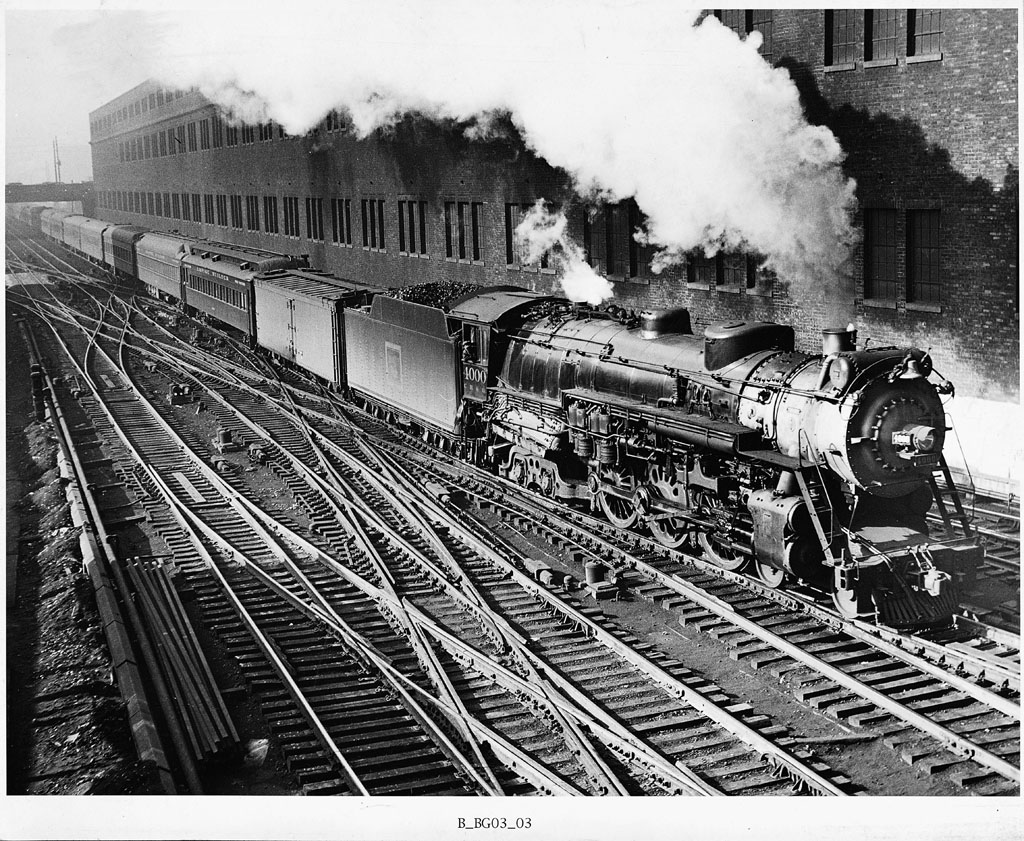
In April 1943, Burlington Route 4-6-4 No. 4000 enters Chicago Union Station with Great Northern’s Empire Builder, which has used CB&Q rails from the Twin Cities. Hudson 4000 was once streamlined to pinch-hit for diesels on the stainless-steel Zephyrs. Classic Trains collection […]
Read More…
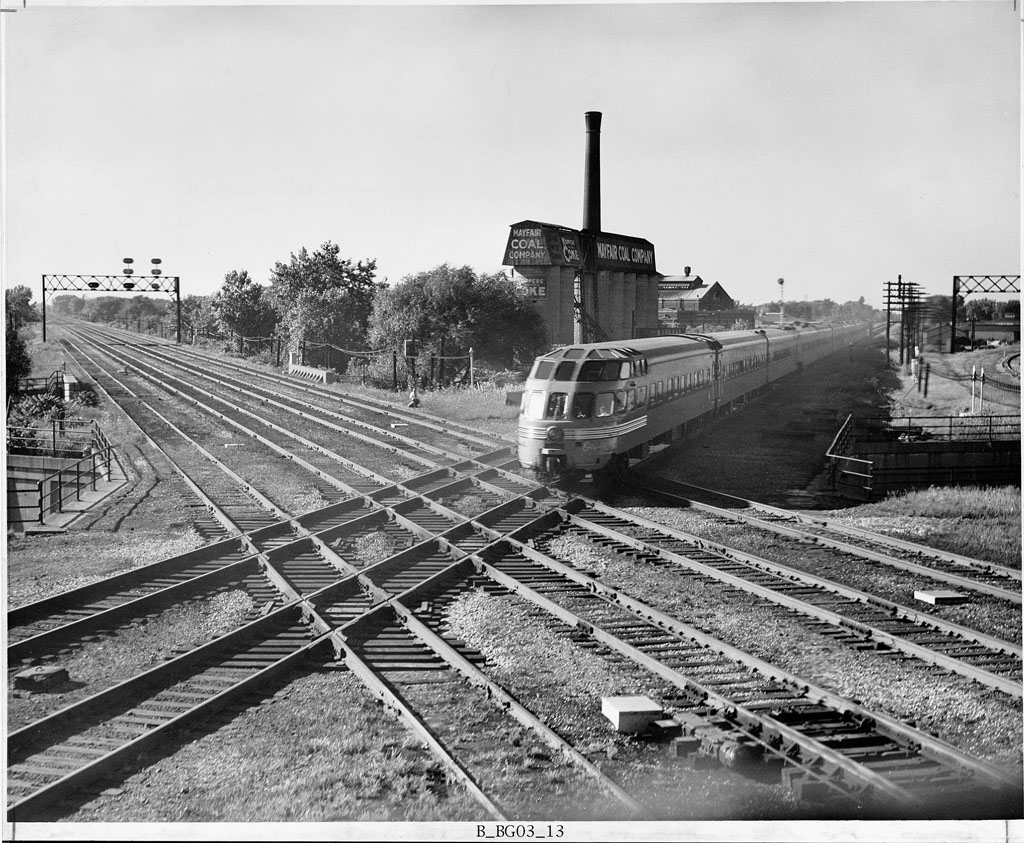
The Skytop sleeper-observation car of Milwaukee Road’s Olympian Hiawatha bangs across the C&NW diamonds in a 1952 view from the tower at Mayfair, on the north side of Chicago. W. A. Akin Jr. photo […]
Read More…
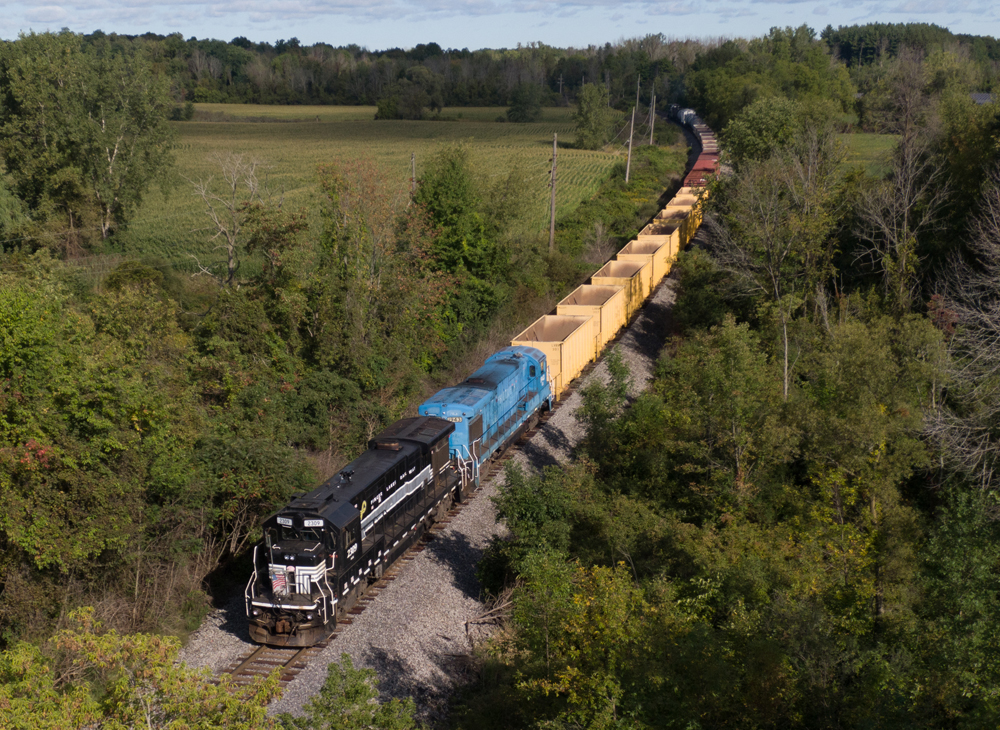
General Electric’s B23-7 GE’s best-selling four-axle unit still hauls freight today. General Electric, now Wabtec, has been out of the intermediate horsepower market for decades now, but beginning in the late 1970s, the company newly introduced Dash 7 line made a mark on the industry. Part of the “second generation” of General Electric’s locomotive portfolio, […]
Read More…
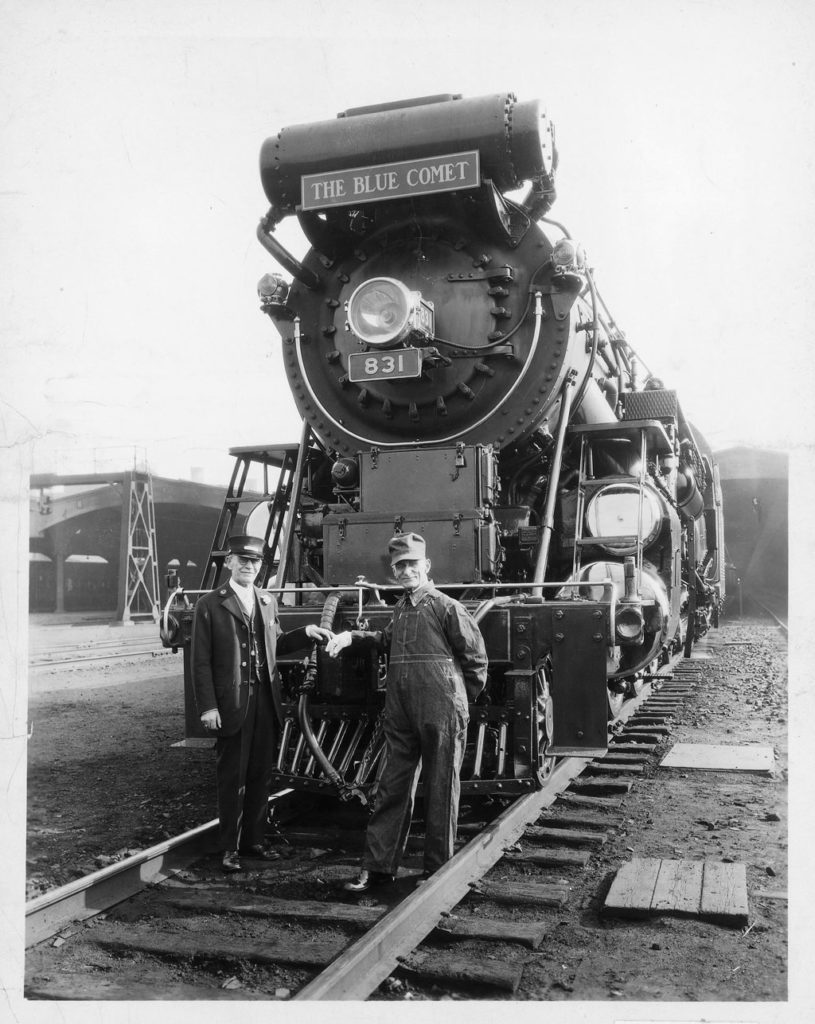
Launched in 1929, the Jersey City-Atlantic City Blue Comet was the pride of the Central Railroad of New Jersey, as is evident in the faces and attire of conductor Joseph T. Ross and engineer John Wait, standing with immaculate Pacific 831 at Jersey City. Classic Trains collection […]
Read More…
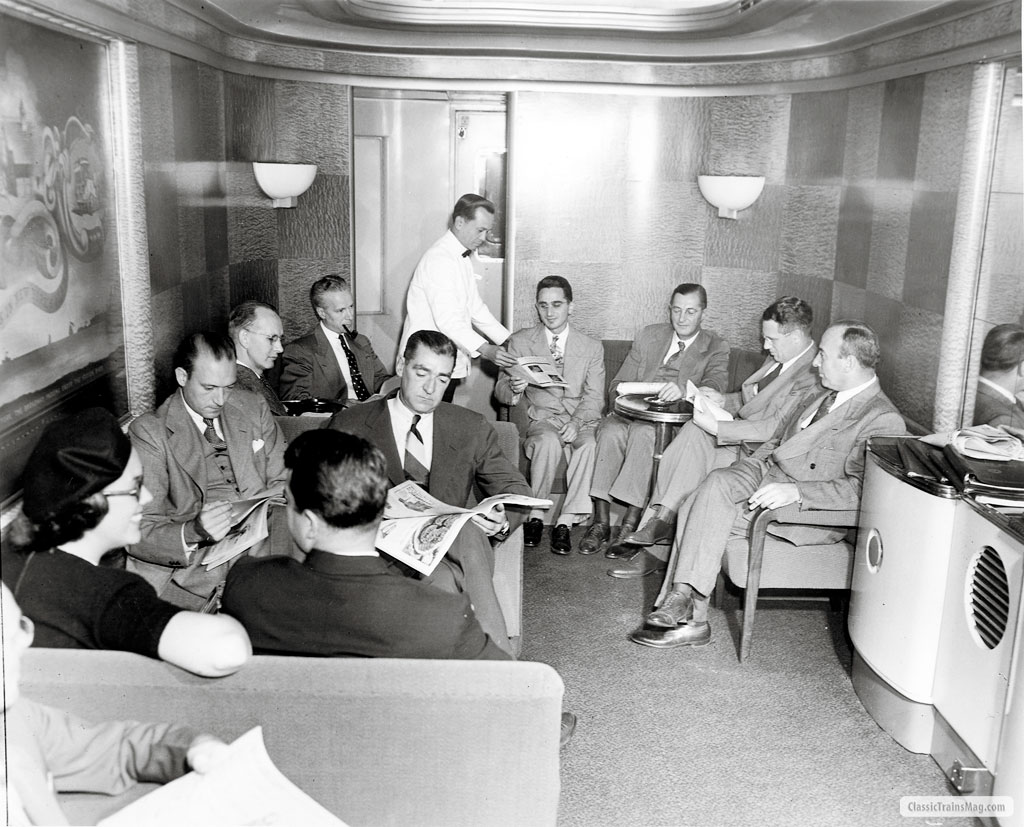
The 1938 Broadway Limited‘s mid-train lounge cars, Harbor Point and Harbor Springs, contained two double bedrooms, a barber shop, a secretary’s room, and a 14-seat lounge area. Typically for designer Raymond Loewy, the lounge section was elegantly decorated but had no windows. PRR photo […]
Read More…
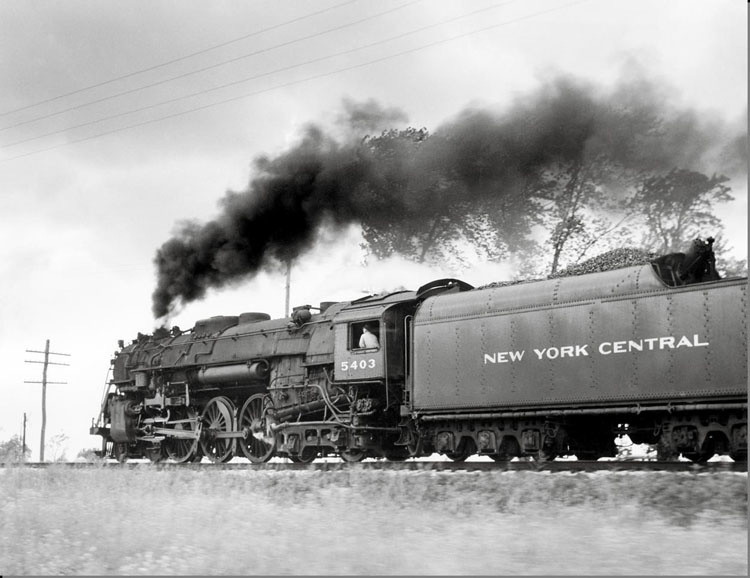
Late in her life, New York Central 4-6-4 5403 races west from Mattoon, Ill., with nameless mail and express train 473 in September 1954. Philip R. Hastings photo […]
Read More…
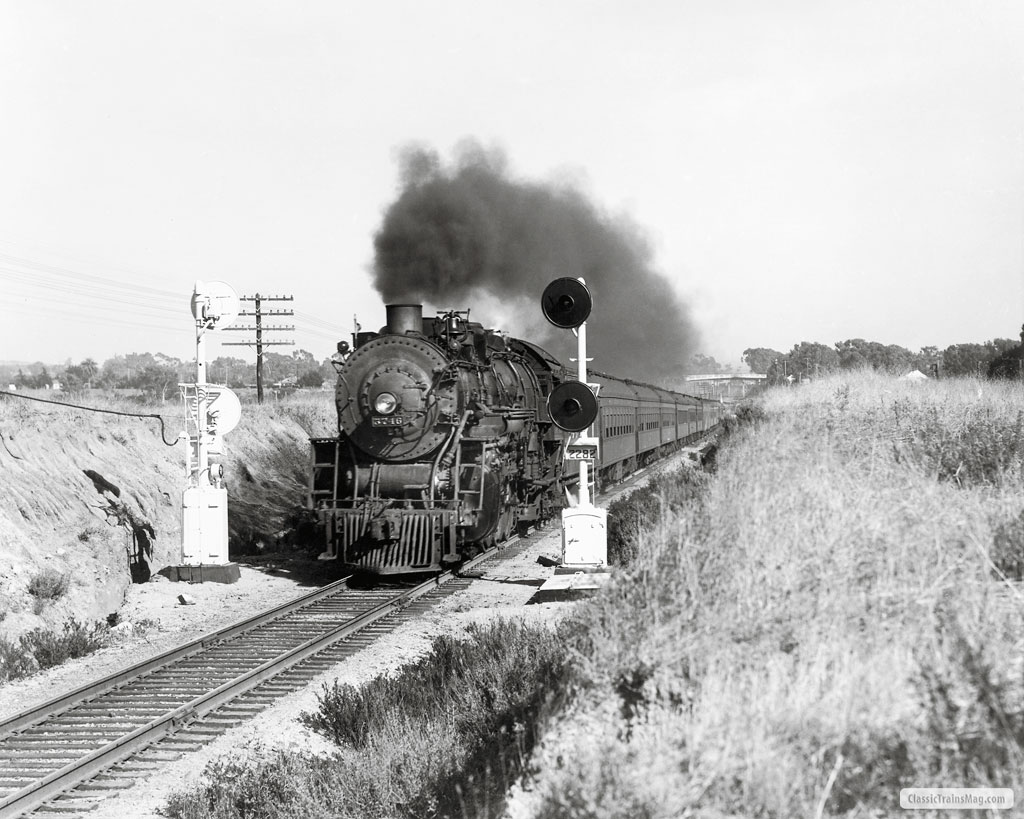
Santa Fe 4-8-2 3746 roars up the Surf Line between Oceanside and Carlsbad, Calif., with a troop train on July 18, 1944. Union Switch & Signal photo […]
Read More…
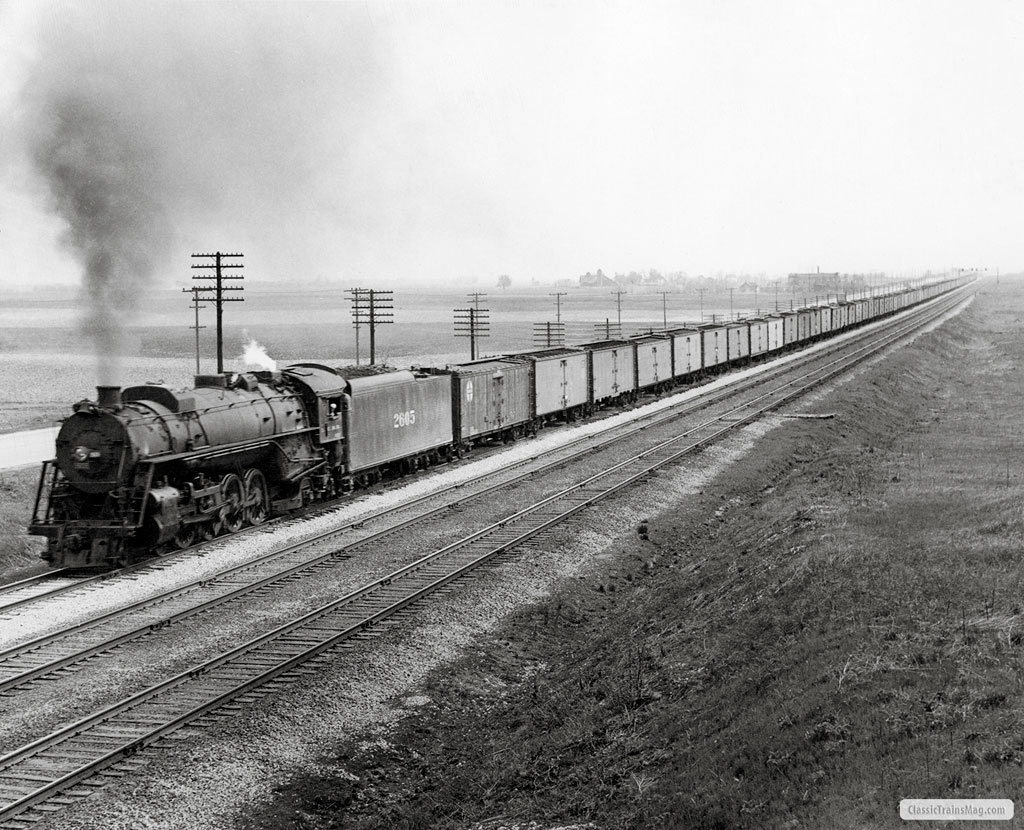
Illinois Central 4-8-2 2605 is northbound near Peotone, Ill., with a long train of reefers filled with bananas. IC did a brisk business hauling the popular Central American fruit from New Orleans to Chicago. IC photo […]
Read More…
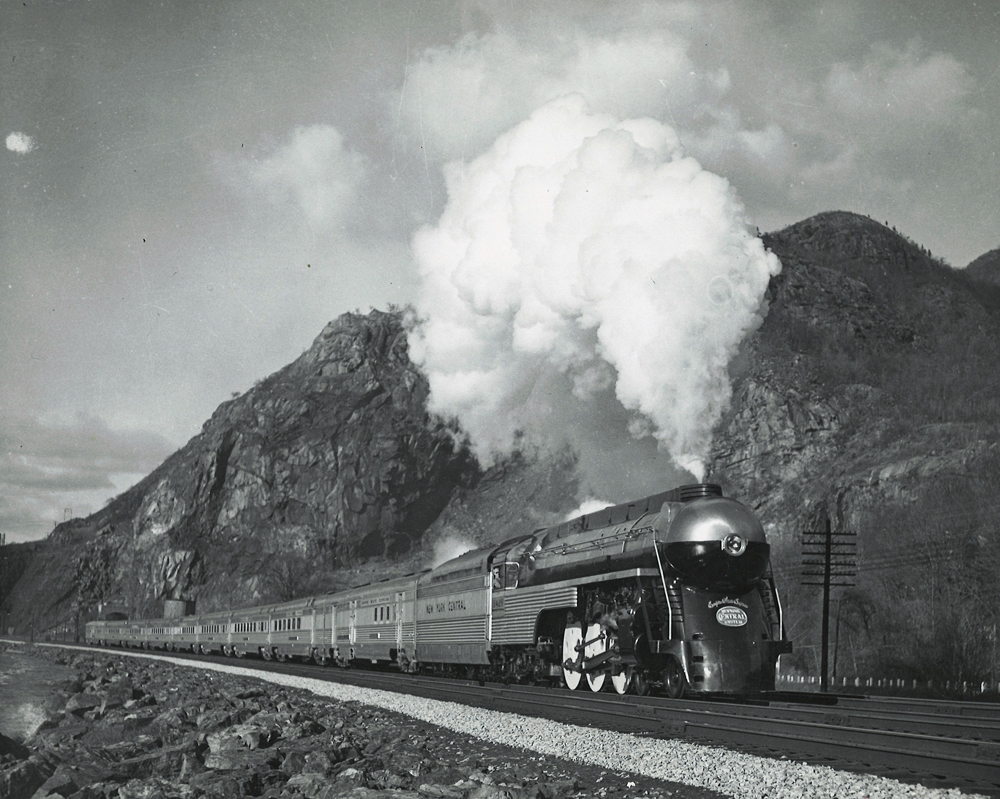
We are exploring ideas on streamlining steam locomotives. During the deepest darkest days of the Great Depression — the economic shock that impacted most of the world from 1929 to 1939 — industrial and political leaders sought out new products, services, and events. They were looking for a means to create jobs, increase sales, and […]
Read More…
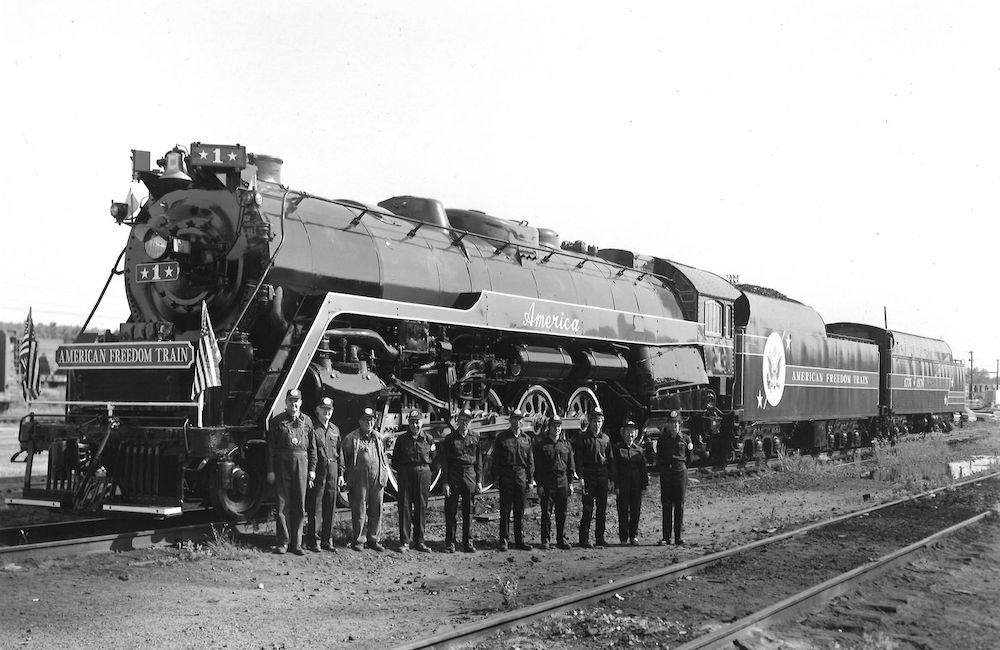
The American Freedom Train steam locomotives were stars in their own right during the U.S. Bicentennial tour. From 1975 to 1976, a total of three each took turns leading the 26-car exhibit train full of American artifacts through 48 contiguous states. What were these patriotic steam stars and where are they now? Southern Pacific No. […]
Read More…
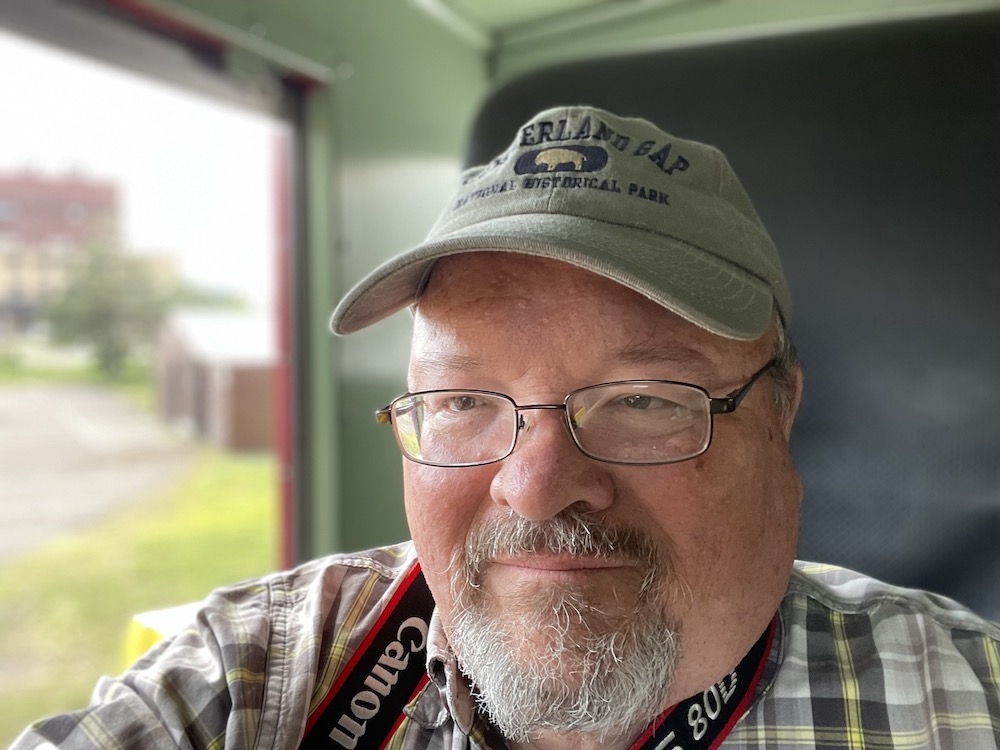
What is your history with Trains? Carl Swanson: I hired on with Kalmbach twenty-five years ago after previous stints with another publisher where I was editor of Passenger Train Journal and RailNews magazines. In 1999, I became an associate editor with Trains Magazine. For a lifelong railfan, and long-time reader of Trains, this was a dream […]
Read More…
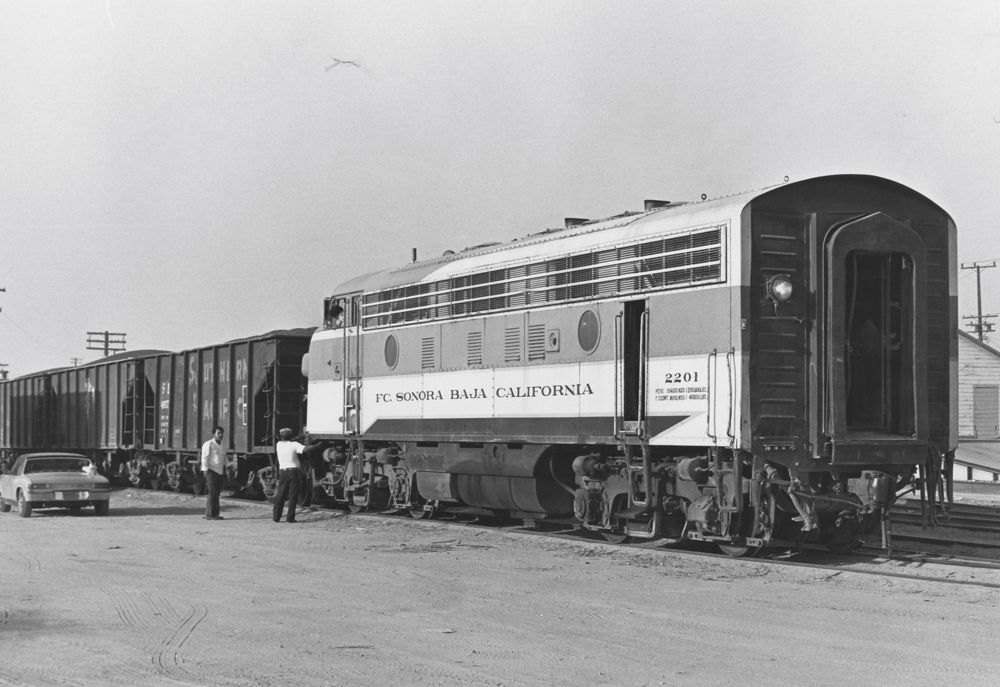
EMD F unit in local service EMD F unit in local service: Back in the 1950s and ’60s, it was not unusual to see a freight cab unit switching an online yard or working a branch line, although they were built to run on main lines, not secondaries or as switchers. But when a local […]
Read More…












